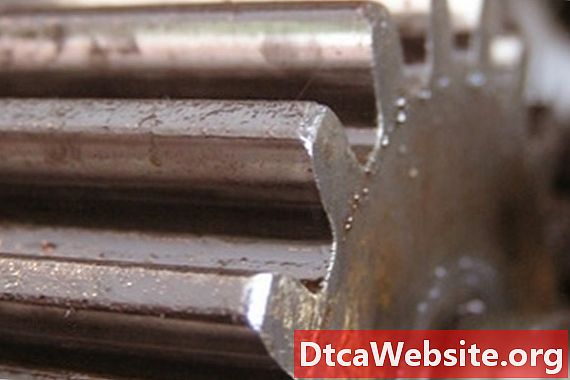
Contenu

Sodium silicate (SS) has long been used to seal driveways, set clothing dyes, preserve food and seal small cracks in engine cooling systems. However, the modern "cash for clunkers" program has helped to recast this versatile "liquid glass" in a new, less flattering light. As it turns out, SS has a slightly darker side when used in just the right (or wrong) circumstances.
Properties
Sodium silicates colloquial nickname (liquid glass) describes the substance and its properties pretty well. SS (chemical name Na2SiO3) is made by combining molten sodium carbonate and silicon dioxide (basically sand), resulting in a white powder that mimics many of the qualities of a salt in its powdered state. However, when dissolved in water and heated to above 210 to 220 degrees Fahrenheit, the SS loses its water molecules and melts into a thin layer of glass. The glass layer is fairly fragile, but it does a good job of sealing leaks and wont melt at anything under 1,500 degrees.
Sealing Function
When added to an engines coolant, the liquid glass solution will dissolve and stick to any hot, sharp edges. When an engine has a cooling system leak in the cylinder head, head gasket or block, the SS collects around the crack. The heated air around the crack dries the liquid glass back into its crystalline form. Over time, the SS builds up in concentric layers of glass, which will eventually seal any leak of up to 1/16 inch in width. Many kinds of antifreeze (Including Chryslers own "Genuine MOPAR" brand) contain trace amounts of liquid glass to ward off minor leaks.
Sealing Drawbacks
As you might expect, the seal created by liquid glass is very brittle. Most commercial liquid glass sealers contain trace amounts of dissolved metal ions, which help to strengthen the crack repair. Without such metals, the glass patch (which doesnt expand as much at temperature as aluminum or iron) would dislodge and eventually crack into pieces.
Sealing With Glass
Liquid glass can easily clog your cars heater core, so disconnecting it and looping the heater core lines together would be a good idea while treating a crack. Liquid glass isnt compatible with some types of antifreeze, so youll have to flush the cooling system both before and after treatment.
Engine Disabler
Liquid glass has gained some fame since the federal "Cash for Clunkers" program went into effect. One mandate of the program was that any "clunker" must have its drivetrain permanently disabled. Silicon is harder than aluminum and bearing material, which means that any liquid glass in the engines oil will quickly shred every moving part it comes into contact with. This little trick has been known to mechanics for decades (much to the dismay of those who never paid their repair fees).


